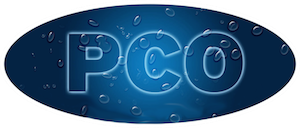Ceramic Coating
There are a wide range of ceramic coatings that can be applied to metal components in order to enhance their functional properties. Most ceramic coatings are electrically nonconductive (making them excellent insulators), have a significantly higher level of abrasion resistance than most metals, and are capable of maintaining their integrity under severely elevated temperatures, sometimes up to 4,500 degrees Fahrenheit. Wear-resistant ceramics, such as titanium nitride and chromium carbide, can be applied to work steels and air-hardening tool steels via chemical vapor deposition (CVD), which is one of the more common application methods currently in use.
Before applying a coating, it is important to ensure compatibility between the ceramic material and the metal surface. Much of this compatibility depends on thermal expansion properties, as having expansion rates that differ too greatly can cause a coating to crack when it is being cooled after application. In addition, a diffusion layer typically forms on the metal surface, and this can lead to a coating that is too soft or too brittle for the design specifications. Complementary thermal properties will help to prevent heat checking and improve resistance to wear and fracture.
Applying a ceramic coating to a substrate is multi-stage process. The preparatory phases of cleaning, roughening, and undercoating (or priming) greatly influence the success of the project. The actual coating effectiveness depends largely on the mechanical, chemical, and physical bonds that determine the coating adherence and ultimate strength of the ceramic layer. Aside from chemical vapor deposition, the most common ceramic coating methods include:
• Plasma Spraying: In plasma spraying, ceramic powder is passed through an ionized gas at extremely high temperatures, sometimes approaching 30,000 degrees (F). The pressurized gas speeds molten ceramic particles toward the substrate where they bond onto its surface. The result is a strongly-adhering and high-density coating, but the process can be very expensive.
• Detonation Gun: The detonation gun process is most effective for particular ceramic materials, such a tungsten carbide, that are required for producing highly dense coatings on a metal surface. It creates an explosion of oxygen and acetylene gas at around 6,000 degrees (F), melting the ceramic and firing it at high speed toward the target substrate.
• Oxygen Acetylene Powder: This method involves heating ceramic powder under a 5000 degree (F) flame, and using compressed gas to spray the coating onto the substrate. It creates porous coating layers with relatively low adhesion strength.
• Oxygen Acetylene Rod: In this method, a fused ceramic rod is passed under an oxyacetylene torch burning at 500 degrees (F). Pressurized gas is then used to spray molten ceramic material onto a surface, producing a coating with a high level of cohesive bonding.
In addition to these standard processing methods, continuing research in ceramic coating technology has introduced newer techniques that may have a major influence on future ceramics work. For example, a procedure for coating metalworking dies with refractory materials, such as molybdenum and tungsten, employs a plasma spray gun and low-shearing compaction to achieve a highly effective and wear-resistant coating.
Source: ThomasNet.com
EASY INSTRUCTIONS:
DRY PARTS IN OVEN FOR 450 DEGREES AT 30 MINUTES.
REMOVE FROM OVEN LET COOL
SPRAY YOUR PART WITH CERAMIC USING A HVLP OR TOUCH UP GUN AND A 0.8 TIP.
LET AIR DRY FOR 20 MINUTES
PLACE INTO OVEN AT 175 DEGREES FOR 20 MINUTES
WHILE PART IS STILL IN OVEN CURE AT 500-700 DEGREES FOR 60 MINUTES.
ONLY ON THE CHROME DO YOU NEED TO POLISH AFTER FULLY CURED.
THIS IS HOW YOU ACHIEVE THE REFLECTIVE CHROME APPEARANCE.
USE FINE STEEL WOOL OR 600 GRIT WET/DRY SANDPAPER. A FINAL POLISH WITH A BUFFING WHEEL, 1200 GRIT SANDPAPER, POLISHING COMPOUND, OR GLASS BEADING AT 25-30 PSI WILL BRING OUT AN EVEN BRIGHTER FINISH. DO NOT USE SCOTCH-BRIGHT OR SIMILAR MATERIAL.
Source: Powders Buy The Pound
Related Resources
- Building Environment Enclosures
- Engineered Buildings
- Powder Coaters Corner
- Powder Coating Industry Research
- Contact




